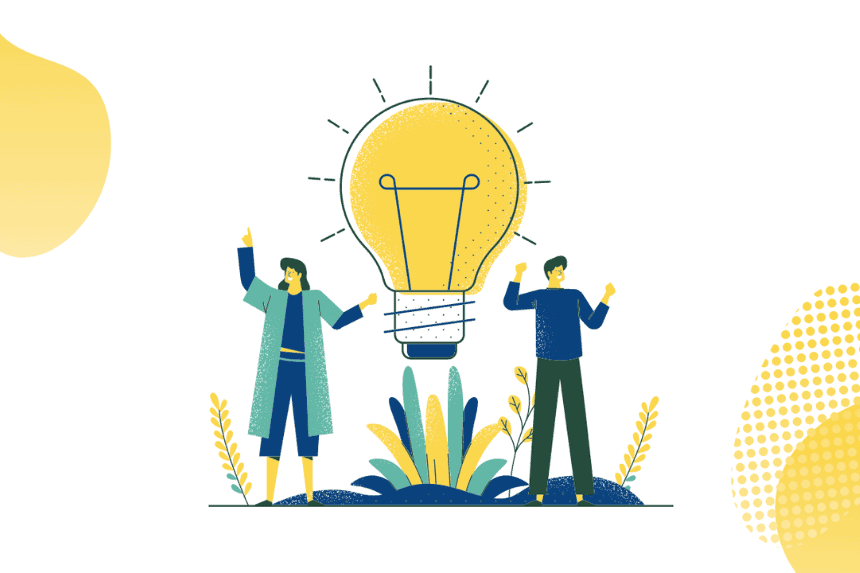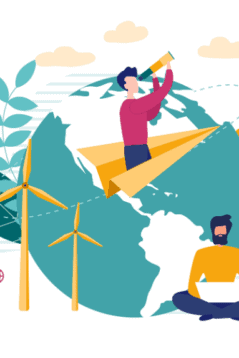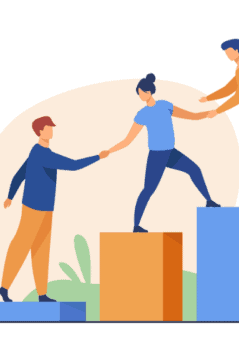We know it, this is an unpopular opinion. Crises usually generate uncertainty and fear, but they also challenge us to grow. How, you may wonder? Well, through change.
Change is never an easy pill to swallow. It means letting go of our old ways and diving into the unknown. But, if we think about it, that’s what evolving is all about. And, in any business context, constant evolution is the key to survival.
Adaptability to change is the ultimate market advantage.
Let’s take a look at the office sector. Back in the old days, we used to spend a significant number of hours at the office, on a daily basis. Statistically, almost a third of an average worker’s life was spent at the job.
But, with the new reality and the post-pandemics era, where work-from-home was introduced as a constant and it seemed to be working pretty well for most of us, we now find ourselves wondering what is the need of coming back to the office and how can we make the office great again?
And these kind of challenges are the starting point in turning any crisis into an opportunity. They force us to imagine the future and prepare our offices to face the constant changes in the today’s business world, by making them more agile and flexible.
But this organizational transformation is a complex process and its success depends mainly on the involvement level of each of its members. Being part of the process is transformative and builds a sense of belonging amongst the team members in the relation with the company. This is the foundation of a successful transformation, where change is embraced, accepted and valued.
Just imagine…
If someone walked up to you right now and told you that the office can be exactly as you want it, how would you picture it? How would you feel to be in a space you know you helped create? Amazing, right?
Well, this is no longer an idea that belongs to the realm of imagination.
If we look back on how the ways of working have evolved over time, we will notice that, in the recent years, they became more and more employee-centric. Today, the best offices are the ones that reflect the expectations, needs and interests of their team members.
Productivity and morale are heavily influenced by office design. In order to generate a positive reaction towards the new ways of working and, ultimately, employee satisfaction, the process of design should be less about the space and more about the people.
After all, the office is like a second home if we think about the hours we spend every day in that environment. And, while decorating your home in a way that makes us feel comfortable and welcomed every day is perfectly normal, so should be engaging in designing our office.
The input employee stakeholders have on each aspect of the design process is fundamental. This continuous feedback loop helps understanding their vision, identifying their needs, addressing their concerns and creating a concept that manages to concentrate all – or, at least many – of these into a design solution that meets everyone’s expectations. Moreover, it helps them adapt and embrace the change that happens in their ways of working.
We know it, because we did it.
At Morphoza, we understand that while most of the time a change benefits us long – term, adapting to it at first may not be as easy as it sounds. In order to be well perceived and easily adopted, the change must be introduced gradually. Through our Trust2Work process, we engage the team members in various stages of the design project, so that they contribute to the implementation of the new ways of working and have the time to accommodate to them.
Take one of our latest projects – Bosch Engineering Center Cluj – as an example. In order to achieve our goal of creating an outstanding office suited for everybody, we conducted a sustained change management process in which we engaged more than 200 associates from the company’s teams and key users in the design process by organizing open talks, focus – groups and workshops.
As a result, we managed to develop a concept that corresponded with their vision and helped them adapt and feel comfortable with the new and innovative office that, after all, they helped create.
But don’t just take our word. See it for yourself – DOWNLOAD THE COMPLETE CASE STUDY


